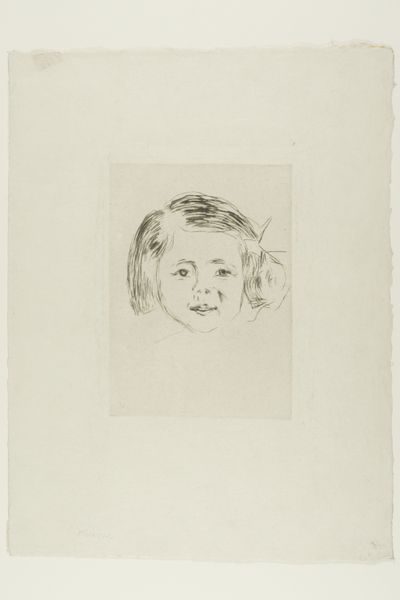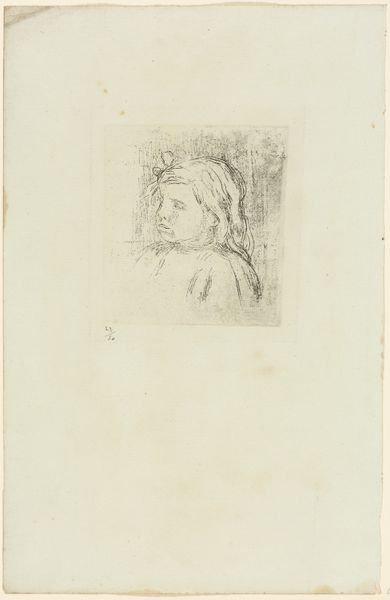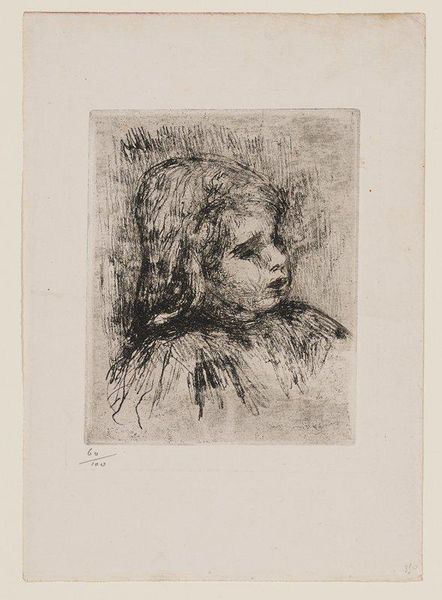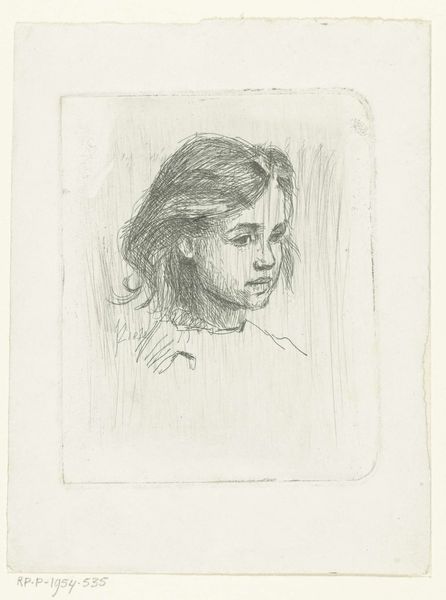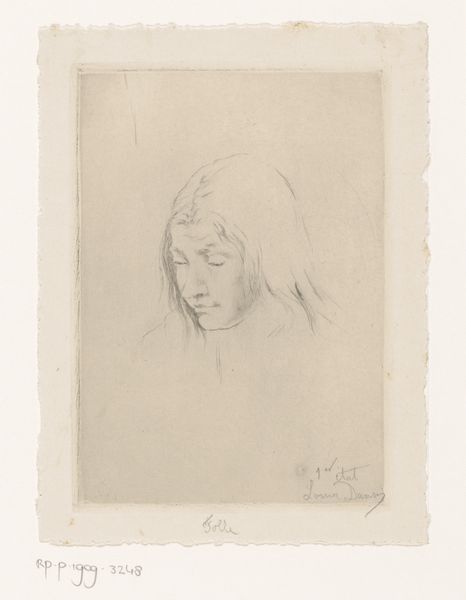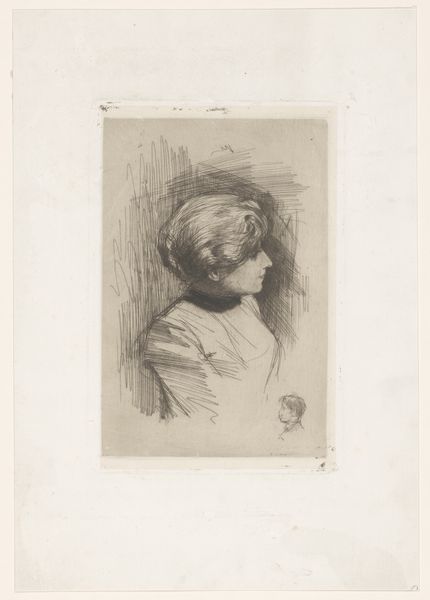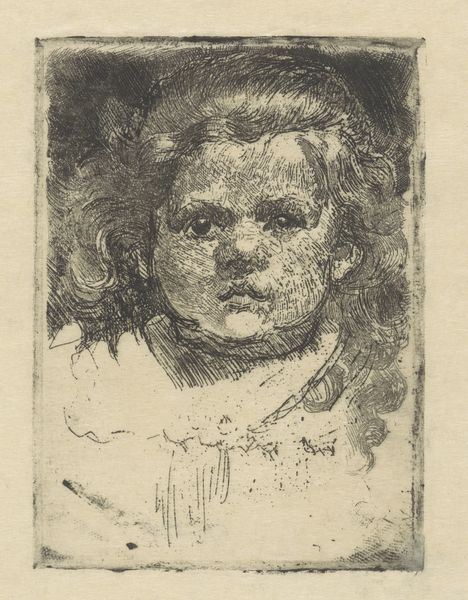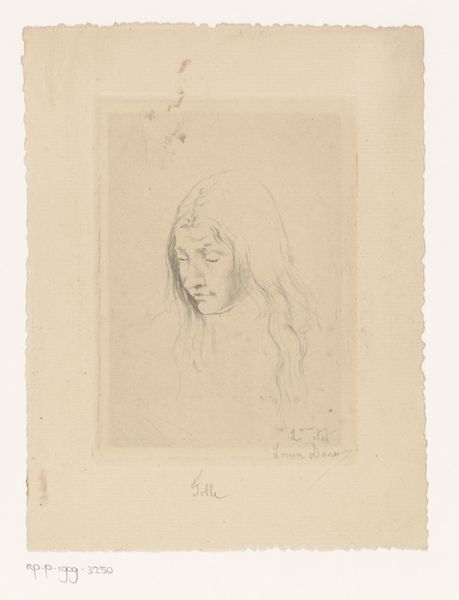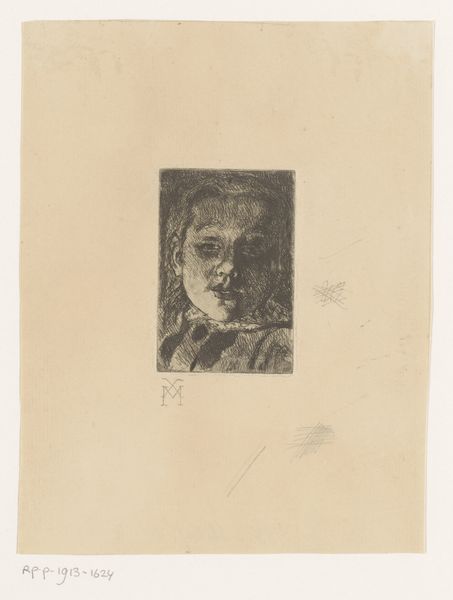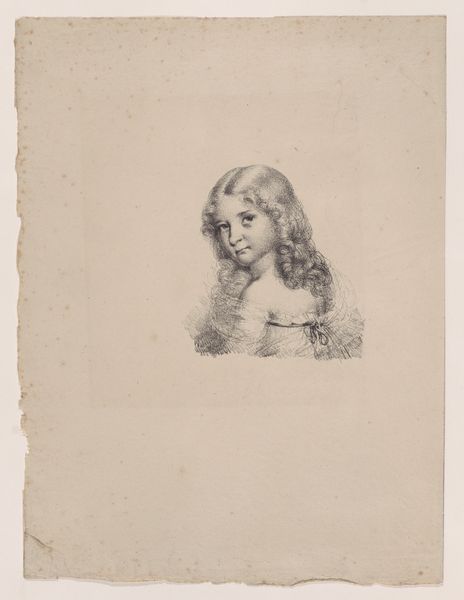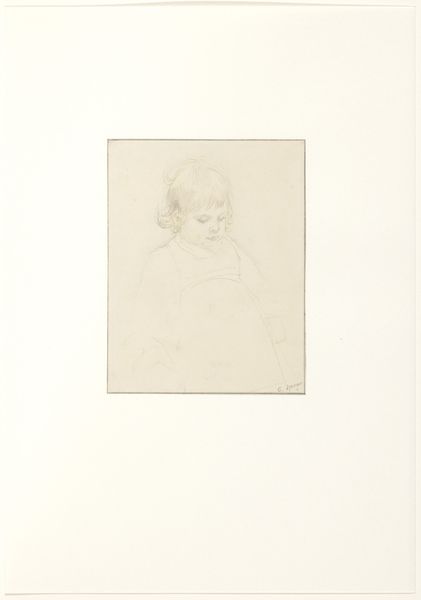
Dimensions: 127 × 118 mm (image); 373 × 267 mm (sheet)
Copyright: Public Domain
Curator: Standing here before us, we have "Claude Renoir, Turned to the Left," a lithograph and pencil drawing on paper by Pierre-Auguste Renoir, likely created between 1904 and 1919. It is currently held at The Art Institute of Chicago. Editor: The delicacy of the lines, the shading...it creates this incredibly tender atmosphere. It’s almost ephemeral. What strikes me is the contrast between the loosely sketched background and the focused detail on the child's face. Curator: Indeed, Renoir often depicted his children. The direction she’s facing carries a symbolic weight, suggesting contemplation or introspection, looking away perhaps hints at her own thoughts and dreams. The loose application of charcoal around her face could be read as the liminal space between child and adult. Editor: Fascinating. For me, it points towards the quickness of impressionism; he likely captured a fleeting moment. It seems almost unfinished, immediate, and speaks to the rapid pace of modern life. Look at the rough edge of the paper, too—nothing precious here; a workshop object perhaps more so than high art. Curator: Certainly. But her gentle gaze, despite the simplicity of the rendering, invites us to consider childhood innocence, lost perhaps to the growing industrialization of Europe, the symbol of purity corrupted. Her turned head carries all the pathos of a rapidly changing world. Editor: Or maybe it speaks simply to material realities: the cost of materials, paper as a precious commodity in the face of growing industrialization. The fact that this exists as a lithograph speaks to the accessibility of art for a burgeoning middle class. Its intimacy lies in its accessibility, made through mass production rather than a singular act of genius. Curator: A valid point; it reminds us that art doesn't exist in a vacuum. I feel that her innocence and simplicity represent nostalgia for a time before such mass production. Editor: I’m glad we could approach it from such different perspectives; for me, thinking about its method and distribution challenges the cult of the artist and puts making within the context of consumption. Curator: And for me, tracing these enduring visual cues back through centuries, highlights the potency and fragility of these shared values.
Comments
No comments
Be the first to comment and join the conversation on the ultimate creative platform.
